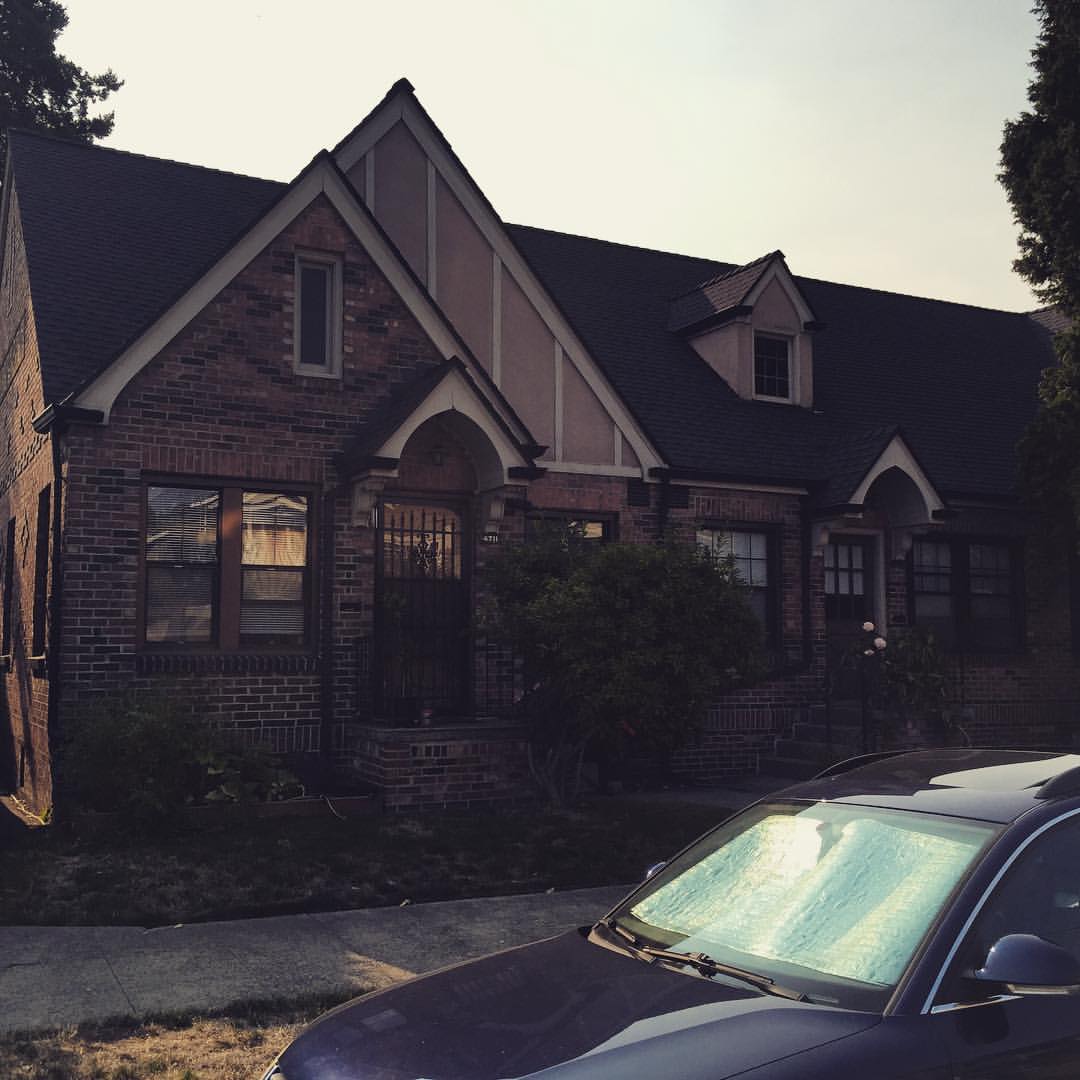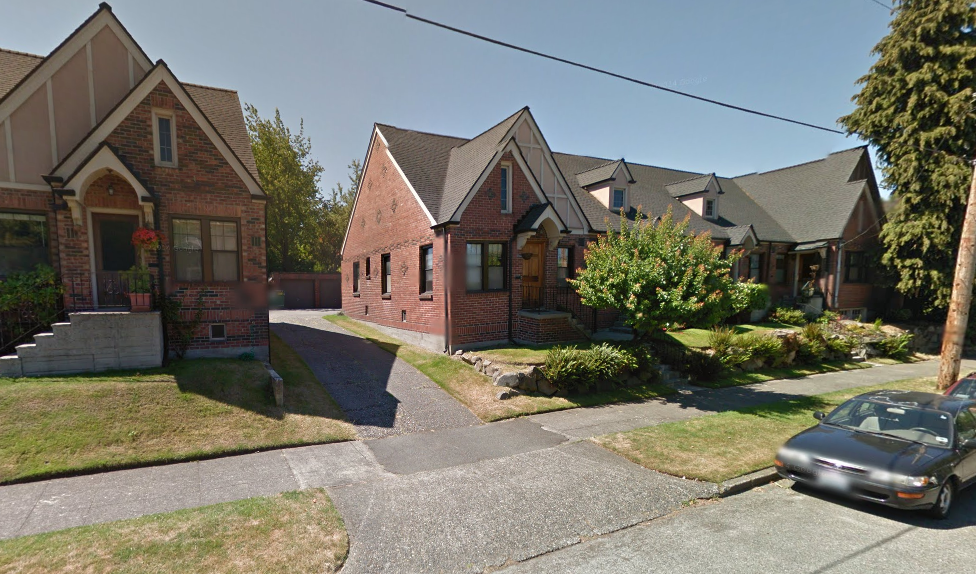Over the weekend, I drove through Wallingford after picking up some groceries and along the way one particular row of houses caught my eye. At first glance, I thought they were just some nice brick homes that all happened to look similar. But upon closer examination, I realized that lining the street was four attached houses smack dab in the middle of a single-family area. Shocked by this rare sighting, I immediately stopped the car in the middle of the following intersection and told my passenger that I had to capture an image of it. I got out my camera phone and took closer to a half-dozen photographs to memorialize the event. Once I got home, I decided to confirm my assumptions and was even more surprised with my findings.

The site upon which the homes sit is relatively small with only 25,000 square feet to put into use. Yet, three separate structures and 16 dwelling units manage to fit on it — something you wouldn’t necessarily think in brief passing. The two residential buildings are single-story rowhouses that look much the same as any other Wallingford single-family home would. Typical of the Craftsman era, the buildings feature embellished red brick with strongly pitched roofs, semi-Tudor patterning, and dormers to top it all off. As an added bonus, some units also happen to have basements, which are only noticeable from daylight windows skirting bottom edges of the buildings.
Both residential buildings are “L” shaped themselves, split only by a rearyard driveway access in the middle of the site. The frontages of the site are essentially flanked in full by the buildings, but given the scale of the structures it feels almost natural. In the rear of the property, there is a paved courtyard and carriage structure based upon the traditional mews approach. The carriage structure presumably serves as long-term storage for the cars and kayaks of residents.

If the architecture itself isn’t a strong hint, this series of homes aren’t new to the area. They date back to 1929, around the time when Wallingford was ending its early round of infill development. For some context, it’s worth noting that the property is zoned SF 5000 like all of the surrounding blocks to match the largely residential character of this part of Wallingford. North of the site is home to St. Benedict School, a local parochial school, while the remainder of the adjacent properties are mostly single-family homes with a modest mix of duplexes. And, just a few blocks to the south is the heart of Wallingford.
There really is more to single-family residential areas than meets the eye.
Stephen is a professional urban planner in Puget Sound with a passion for sustainable, livable, and diverse cities. He is especially interested in how policies, regulations, and programs can promote positive outcomes for communities. With stints in great cities like Bellingham and Cork, Stephen currently lives in Seattle. He primarily covers land use and transportation issues and has been with The Urbanist since 2014.



